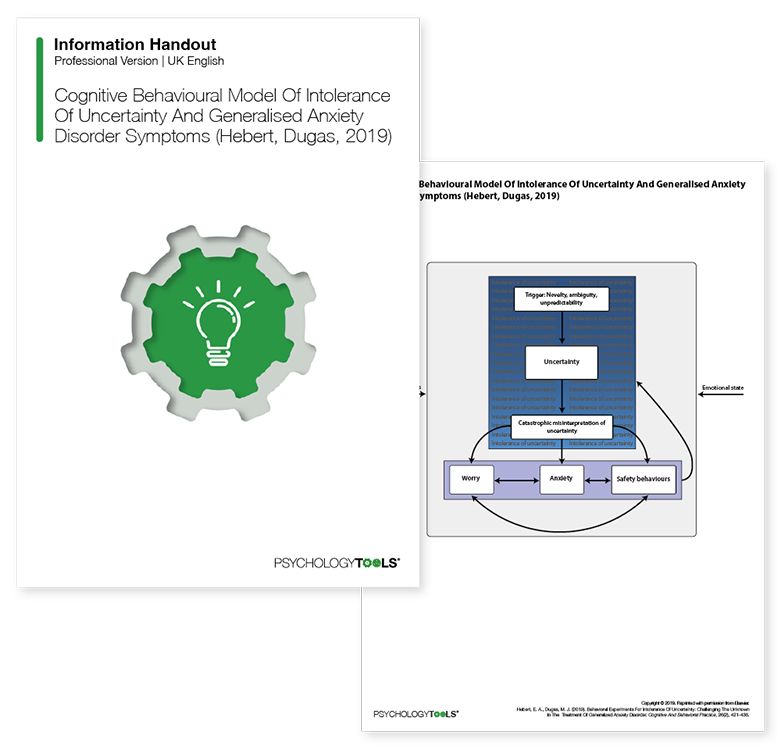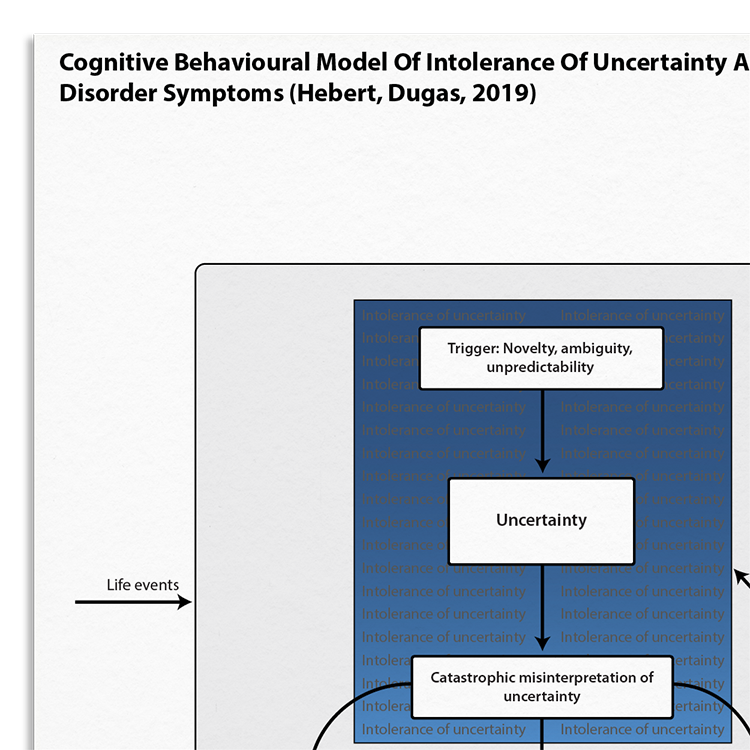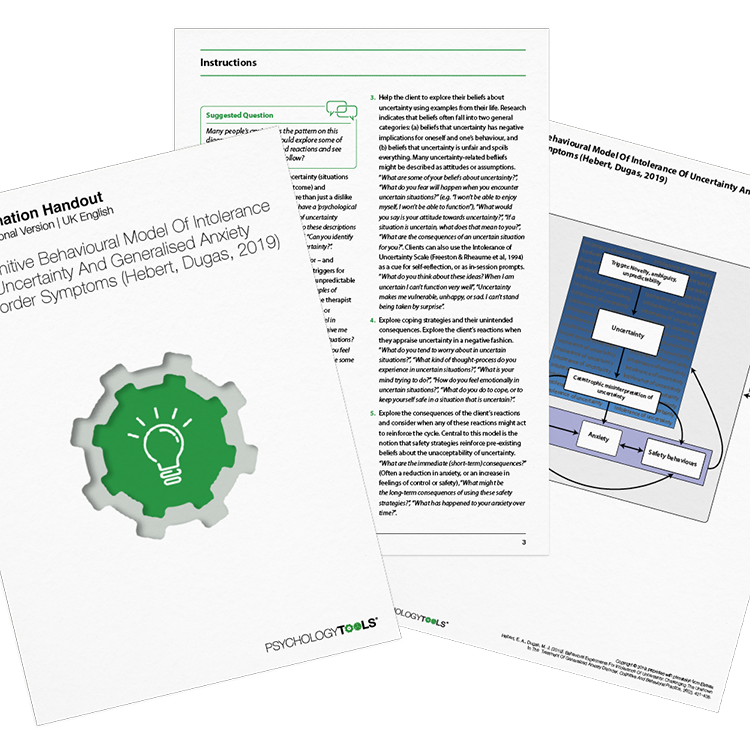Professional version
Offers theory, guidance, and prompts for mental health professionals. Downloads are in Fillable PDF format where appropriate.
A licensed copy of the Hebert & Dugas (2019) cognitive behavioral model of intolerance of uncertainty and generalized anxiety disorder symptoms which describes a framework to address the core components and symptoms of GAD.

Offers theory, guidance, and prompts for mental health professionals. Downloads are in Fillable PDF format where appropriate.

Generalized anxiety disorder (GAD) is characterized by persistent and excessive worry, often accompanied by symptoms such as restlessness, fatigue, and sleep difficulties. A key psychological factor in GAD is intolerance of uncertainty (IU) — a tendency to react negatively to situations that are ambiguous or unpredictable.
The original Dugas et al. (1998) model positioned IU as a central vulnerability in GAD, shaping how individuals perceive and respond to uncertainty. In their 2019 update, Hebert and Dugas refined this framework, placing greater emphasis on how people appraise uncertainty itself — not just their worries. This updated model provides clinicians with a more precise lens through which to understand and treat GAD. The model supports targeted interventions aimed at helping clients confront and reframe their beliefs about uncertainty, reducing worry and anxiety in meaningful, lasting ways.
Professionals seeking effective approaches for GAD treatment will find this resource invaluable. By focusing on intolerance of uncertainty, clinicians can:
Persistent, excessive worry impacting daily life.
Fear of unknown outcomes resulting in avoidance and safety behaviors.
Understand more about the cognitive behavioral model of intolerance of uncertainty.
Use the model as a template to organize your case formulations.
Use your knowledge of the model to explain maintenance processes to clients.
Engage clients in discussions about their beliefs and behaviors.
Customize interventions based on individual maintenance mechanisms.
Use in supervision to discuss formulation and treatment plans.
The Cognitive Behavioral Model Of Intolerance Of Uncertainty (IU) offers a structured explanation for how generalized anxiety disorder (GAD) develops and is maintained. Earlier cognitive models of anxiety focused broadly on perceived danger and overestimation of threat, but they struggled to account for the persistent, uncontrollable worry that defines GAD.
The concept of IU was introduced to address this gap. It describes a dispositional tendency to react negatively — emotionally, cognitively, and behaviorally — to uncertain situations. Individuals high in IU find ambiguity distressing and are more likely to interpret uncertain events as threatening. This makes IU a key vulnerability factor for chronic worry and anxiety.
The original 1998 model by Dugas and colleagues identified IU as central to GAD, alongside related cognitive and behavioral processes (e.g. positive beliefs about worry, poor problem orientation, cognitive avoidance). In the 2019 update, Hebert and Dugas shifted focus toward how people appraise uncertainty itself, rather than worry more generally. This refined model draws attention to the interpretations that individuals attach to uncertainty — e.g., “If I don’t know what will happen, something bad is likely to occur.”
This emphasis on appraisals aligns with cognitive behavioral formulations in related areas such as obsessive compulsive disorder (OCD) and panic disorder, where distorted interpretations of internal experiences play a central role. For therapists, the Hebert & Dugas (2019) model offers a clear, evidence-based framework to support case conceptualization, psychoeducation, and treatment planning. It highlights the importance of exploring clients’ beliefs about uncertainty and using these insights to guide collaborative formulation and therapeutic focus.

Just enter your name and email address, and we'll send you Cognitive Behavioral Model Of Intolerance Of Uncertainty And Generalized Anxiety Disorder Symptoms (Hebert, Dugas, 2019) (English US) straight to your inbox. You'll also receive occasional product update emails wth evidence-based tools, clinical resources, and the latest psychological research.
Working...
This site uses strictly necessary cookies to function. We do not use cookies for analytics, marketing, or tracking purposes. By clicking “OK”, you agree to the use of these essential cookies. Read our Cookie Policy